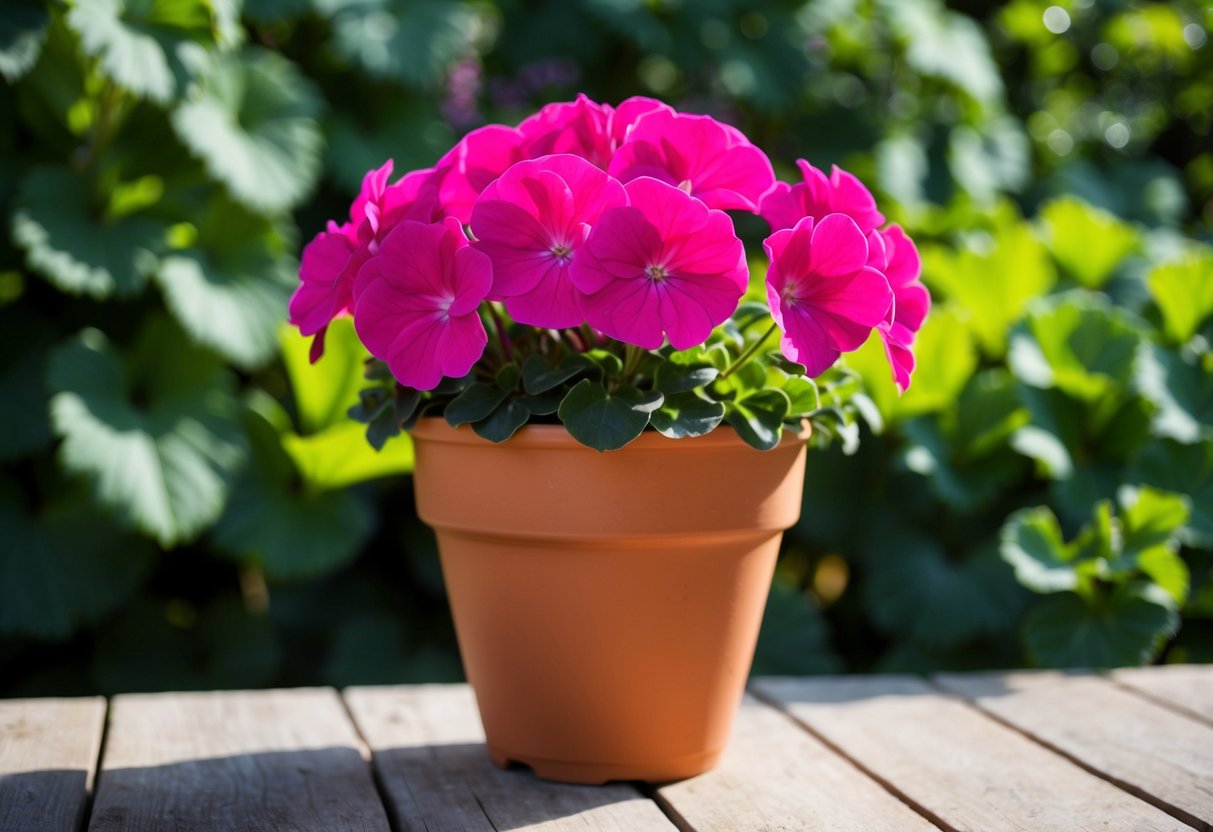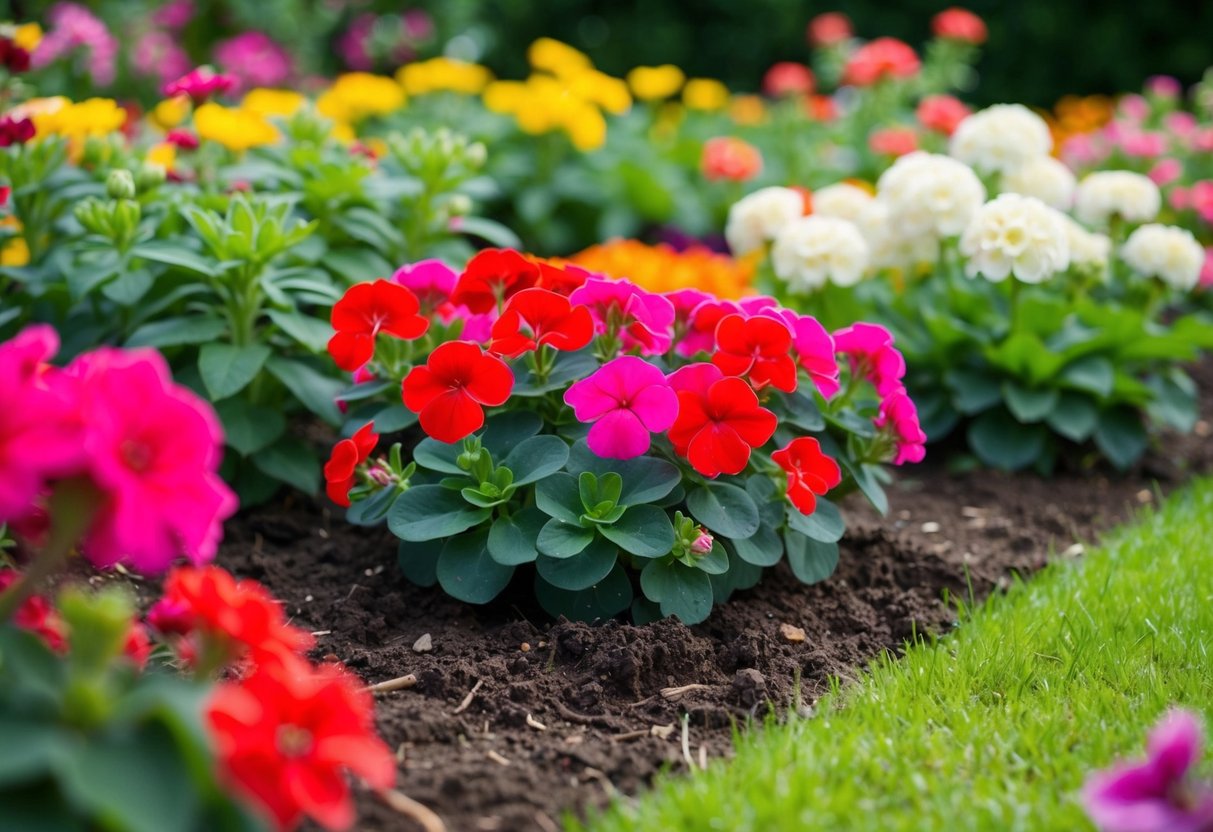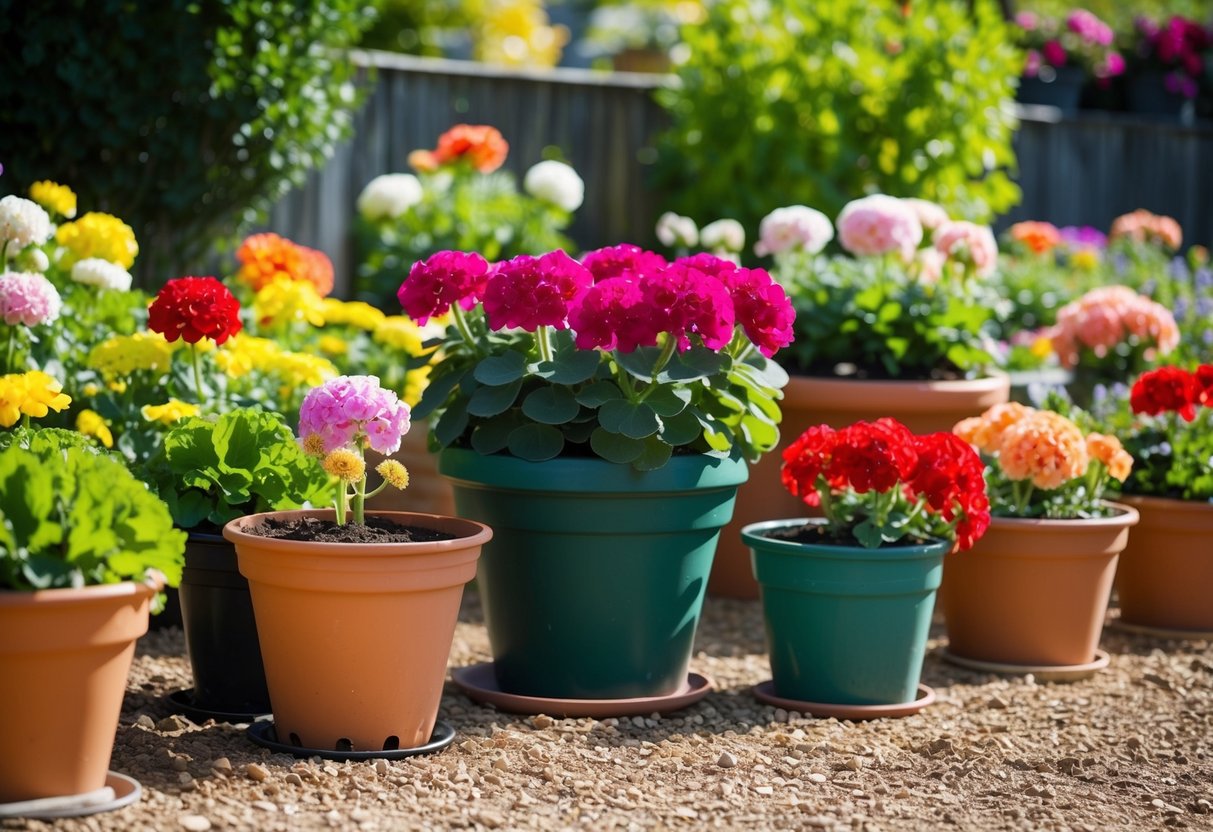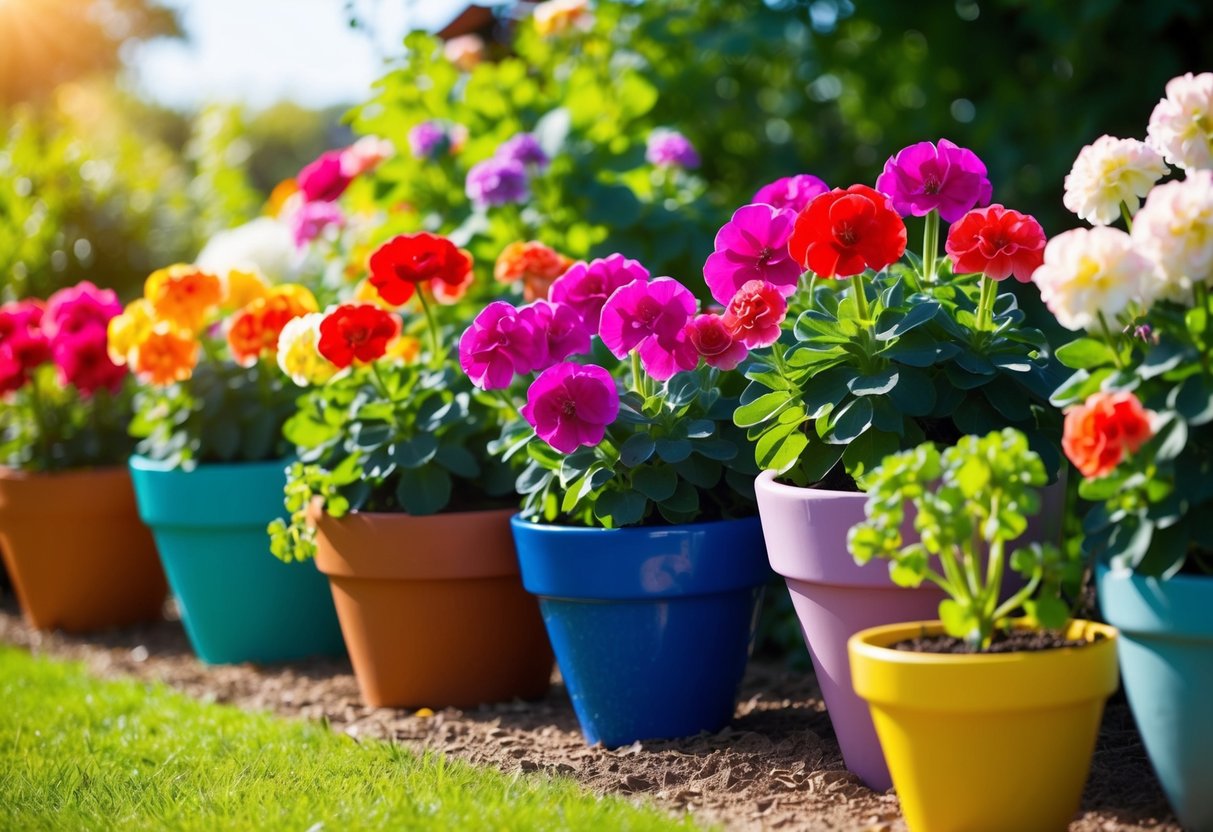Are Geraniums Better in Pots or in the Ground? Tips for Thriving Blooms
When it comes to growing geraniums, a common question is whether they thrive better in pots or in the ground. Geraniums can flourish in both settings, but choosing the best option depends on your gardening goals and local climate.
Potted geraniums offer flexibility, allowing you to move them to catch the sun or avoid harsh weather. This is ideal for varieties like zonal geraniums, which are popular in container gardening for their vibrant blooms and easy care.

If you prefer growing geraniums in the ground, they can add a bright splash of color to your flower beds. Most perennial geraniums do well when planted directly in the garden, provided they have the right conditions. In regions with mild climates, these geraniums can benefit from the natural nutrients in the soil, promoting healthy growth without much effort. Geraniums planted in the ground tend to thrive with morning sun and some afternoon shade.
Consider the type of geranium you have, such as ivy or scented geraniums. Each has unique needs and preferred growing conditions.
Benefits of Potting Geraniums

Potting geraniums lets you control their growth environment, leading to healthier plants and stunning blooms. It allows you to easily manage conditions like light, soil, and water, and make seasonal transitions smoother through practices like overwintering.
Optimizing Growing Conditions
Potting your geraniums in containers, hanging baskets, or window boxes helps you meet their specific needs.
One advantage is that you can move pots to areas where the plants receive full sun for at least 6-8 hours, which geraniums love.
By using a potting mix with good drainage, you prevent the common problem of overwatering and root rot. Most pots will have drainage holes to help excess water escape, keeping the roots healthy.
This kind of control is vital for maximizing growth and ensuring your plants can handle changes in temperature and humidity.
Enhancing Bloom Quality
Potted geraniums often produce more vibrant blooms. With the ability to move containers, you can experiment to find the perfect spot where your geraniums consistently get the right amount of light.
Pots allow for regular feeding with a balanced fertilizer. Fertilizing during the blooming season can improve the number and quality of blooms. Regular deadheading—removing spent flowers—also encourages new blossoms.
Ensuring the plants aren’t crowded, which is easy in individual pots, improves air circulation. This means fewer pests and diseases, leading to healthier and more abundant blooms.
Ease of Care and Overwintering
One of the joys of container gardening is how easy it makes caring for your geraniums.
You can quickly identify and resolve issues like pests or nutrient deficiencies. If overwatering becomes an issue, just check the pot weight. It’ll feel heavy if the soil’s too wet.
Winter brings its challenges, but pots let you bring your geraniums indoors for overwintering. This keeps them safe from frost. Reduce watering and place them in a cool, bright spot. They’ll go dormant and come back strong in the spring, offering another season of beautiful blooms.
Advantages of Planting Geraniums in Ground

Planting geraniums in the ground can lead to vibrant blooms and healthy growth. This method offers benefits like ample space for roots, better interaction with the ecosystem, and increased longevity for the plants.
Natural Growth and Space
When you plant geraniums in the ground, they have more room to stretch out their roots. This extra space can encourage larger and more robust plants.
Unlike pots, the ground allows roots to spread freely, which supports healthy development.
The soil’s natural nutrients also nourish the plants, which is beneficial for both common and perennial geraniums. Ensure you’re using well-draining soil to prevent root rot. This helps maintain a good balance of moisture and air, which is important for the plant’s growth.
Another aspect to consider is the soil’s pH. Geraniums usually prefer a slightly acidic to neutral pH. By regularly checking the soil conditions, you can ensure your geraniums thrive and enjoy vibrant blooms throughout the season.
Ecosystem Interaction
Growing geraniums in the ground allows them to interact naturally with the surrounding ecosystem. They benefit from the presence of other plants and soil organisms, which can lead to healthier growth.
Beneficial insects and microorganisms in the soil can support plant health by controlling harmful pests and diseases.
When you plant them in your garden, they also contribute to attracting helpful insects like bees and butterflies. This pollination can improve your garden’s overall health.
Being part of a larger ecosystem supports the plants in ways that pots cannot, providing a more balanced and resilient growing environment.
Furthermore, planting in the ground makes it easier to use natural fertilizers, which can improve the soil structure over time. This results in better conditions for your geraniums as they grow alongside other garden plants.
Longevity and Perennial Behavior
Geraniums planted in the ground can experience greater longevity, especially for perennial varieties. They can come back year after year, mostly in hardiness zones that suit their needs.
Perennial geraniums can survive winter and regrow in spring, offering a long-lasting addition to your garden.
These plants become part of the soil over time, adapting to its conditions. They establish deeper root systems, which helps them access water and nutrients more effectively. This can reduce your need for watering and fertilizing.
Regular pruning and maintenance can encourage your geraniums to remain healthy and flowering. This enhances their beauty and lifespan, ensuring they bring color to your garden season after season.
Caring for Your Geraniums

Keeping your geraniums healthy involves attention to watering, fertilizing, pruning, and pest management. Each aspect plays a crucial role in helping geraniums thrive, whether in pots or the ground.
Watering and Fertilizing Tips
When watering geraniums, ensure the soil is well-draining. Overwatering can lead to root rot, so wait until the top inch of soil feels dry.
Typically, watering once or twice a week is sufficient. In hotter climates, you might need to water more often.
For fertilizing, use a balanced fertilizer roughly every four to six weeks during the growing season. This schedule helps promote vibrant blooms and lush foliage.
A drop in blooms may signal a need for nutrients, so keep an eye on plant health for adjustments. Be cautious not to over-fertilize, as this can cause yellowing leaves.
Deadheading and Pruning Practices
Engage in regular deadheading by removing spent blooms. This encourages your geranium to produce more flowers.
Simply pinch off the dead flowers with your fingers or scissors, making sure to remove the stem just above the next leaf.
Pruning involves cutting back leggy stems to maintain shape and encourage growth. Focus on trimming unhealthy or spindly branches.
Pruning back about one-third of the plant in late winter or early spring refreshes new growth and keeps the plant tidy.
Managing Pests and Common Problems
Geraniums can face pests like spider mites and whiteflies. Monitor your plants regularly for these tiny insects.
An application of neem oil can effectively treat both pests, simply spray it directly onto leaves where insects are found.
Watch for common problems like yellowing leaves, which may result from overwatering or nutrient deficiencies. Adjust your care routine where needed, such as reducing water or adjusting fertilizing habits. Keeping an eye on these issues ensures your geraniums remain healthy and vibrant.
Propagation and Repotting

When propagating geraniums, you can start them from seeds or by taking cuttings. Each method has its advantages, and knowing when and how to transplant or repot is crucial for encouraging vibrant blooms.
Starting from Cuttings and Seeds
To propagate geraniums, you might find starting from cuttings a straightforward method.
Take a clean pair of scissors and cut a 4-6 inch stem from a healthy plant. Remove leaves from the lower half and place the cutting in fresh, well-draining potting soil.
While some gardeners use rooting hormone, it’s not necessary for geraniums and can sometimes cause root rot.
Alternatively, you can start geraniums from seeds, which requires patience.
Begin by planting seeds in small pots or seed trays filled with potting mix. Cover the seeds lightly with soil and water gently.
Keep them in a warm spot, as germination can take a few weeks. Ensuring the soil stays consistently moist is key for successful seed propagation.
Transplanting and When to Repot
Transplanting involves moving your geraniums, whether they started as cuttings or seeds, into larger containers or into the garden. A good rule of thumb is to transplant once the roots start to fill the pot.
When it comes to repotting geraniums, doing so annually or when the plant outgrows its container is beneficial.
Choose a pot 1-2 inches larger in diameter with good drainage. This helps prevent “wet feet,” a condition geraniums dislike.
Repotting encourages new growth, ensuring your geraniums continue to produce their vibrant blooms. When transplanting to the ground, ensure the site has well-draining soil, as standing water can harm roots.
Selecting the Right Geranium

When choosing the right geranium for your garden or pots, start by understanding the different types available. Pelargonium is a common choice, and it includes several varieties like Pelargonium x hortorum and Pelargonium peltatum.
Zonal geraniums are popular and known for their striking banded leaves. Meanwhile, ivy geraniums have trailing vines, making them perfect for hanging baskets. For those who love fragrance, consider scented geraniums which release a pleasant aroma with their leaves.
Regal geraniums, also known as Martha Washington geraniums, are recognized for their rich, colorful flowers. They’re slightly more demanding in terms of care but offer stunning blossoms.
Geraniums can be annuals or perennials. Annuals offer vibrant color for one growing season, while perennials are long-lasting and can bloom for multiple years. Consider your climate when deciding, as some geraniums thrive in specific conditions.
Evaluate the flower color you desire. Geraniums offer a wide range, from pink and red to white and purple. This will help in designing a colorful garden.
Geraniums are often low maintenance, making them great for beginners. They require moderate watering and can handle a variety of light conditions. Just be cautious, as some species are mildly toxic if ingested by pets or children.







